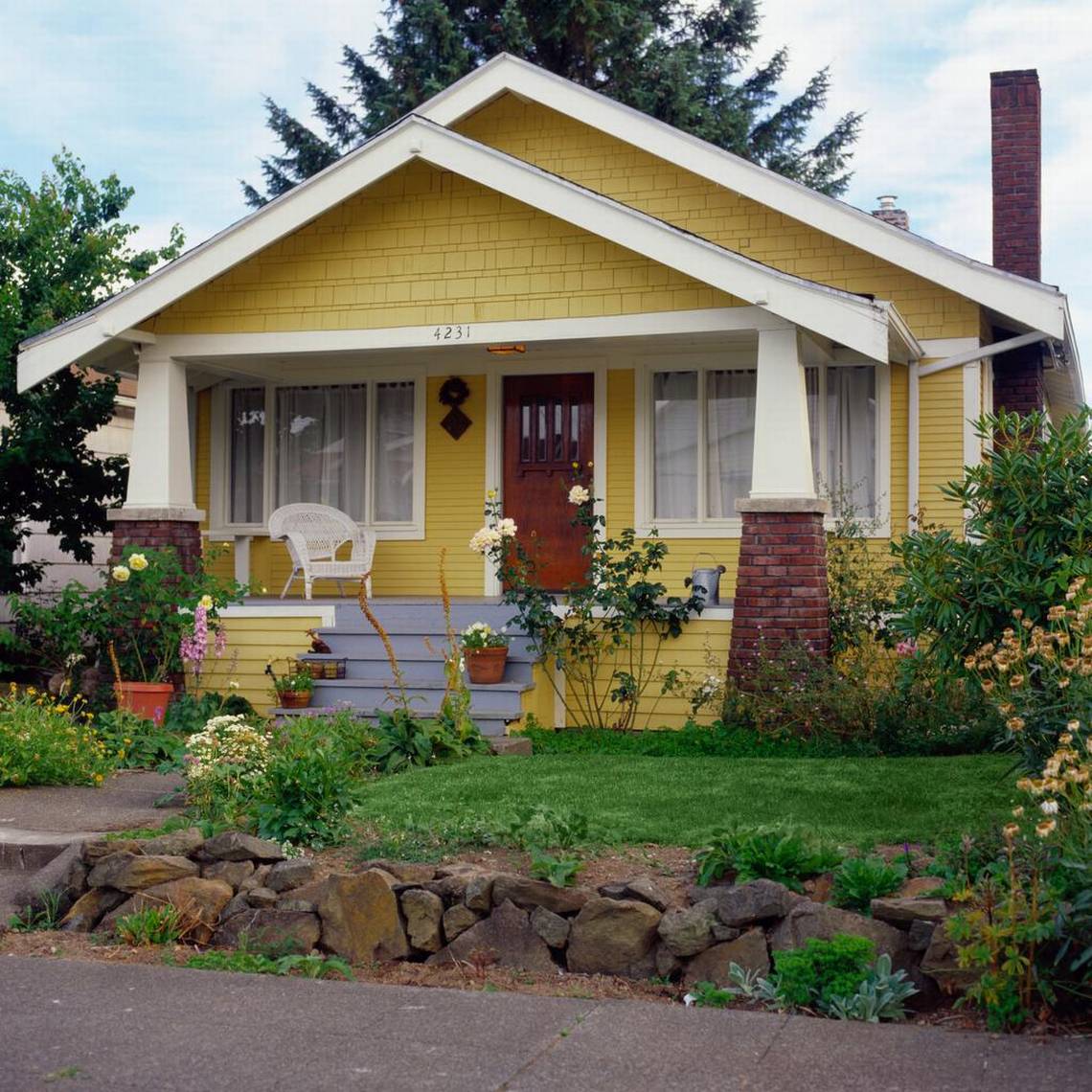#9226. Vibrant Yellow Façade of an American Craftsman Bungalow
Before us is a striking example of an American Craftsman bungalow — an architectural style popular in the early 20th century. House number 4231 displays the classic features of this style: a compact single-story volume with a characteristic gabled roof, an expressive triangular pediment, and an open porch with an overhang supported by substantial brick columns.
The façade is painted in a vibrant yellow color, creating a welcoming, sunny appearance. Contrasting white elements of the cornice and trim emphasize the building's geometry. The wall cladding is executed in the traditional bungalow technique — horizontal siding that mimics wooden boards. Of particular note is the solid brickwork in the lower portion of the porch support columns — a technique characteristic of the Craftsman style that adds visual stability to the structure.
The entrance area is designed with special care: a rich brown wooden door with glazing serves as the central accent of the composition. Large windows with curtains are symmetrically placed on either side of the entrance, adding harmony to the façade. A decorative element above the door and a cozy wicker chair on the porch complete the image of a classic American home.
The area around the house organically complements the architecture: a neat front garden with a stone retaining wall, flowering plants in pots, and a small, well-maintained lawn create a cohesive picture of a comfortable family dwelling.
When designing your own façade in a similar style, it's worth paying attention to the harmonious combination of materials (wood, brick), contrasting color schemes for main surfaces and details, and the proportionality of porch elements. It's important to maintain symmetry in window placement and not overload the façade with excessive decoration, staying true to the "beauty in simplicity" principle characteristic of the Craftsman style.
